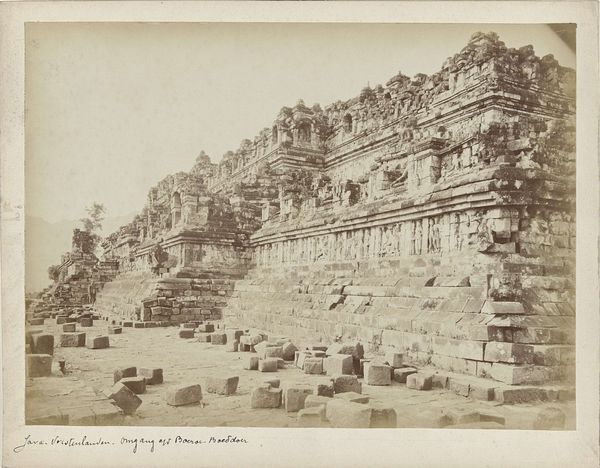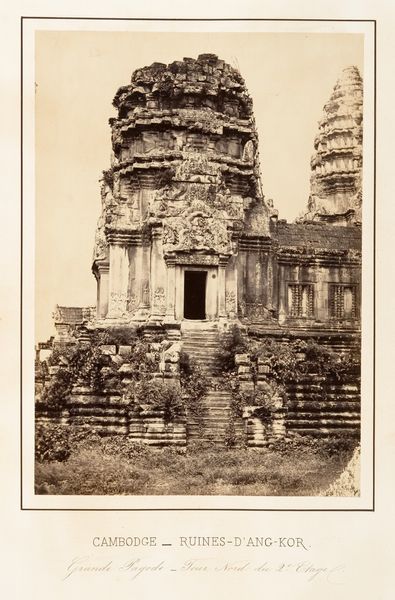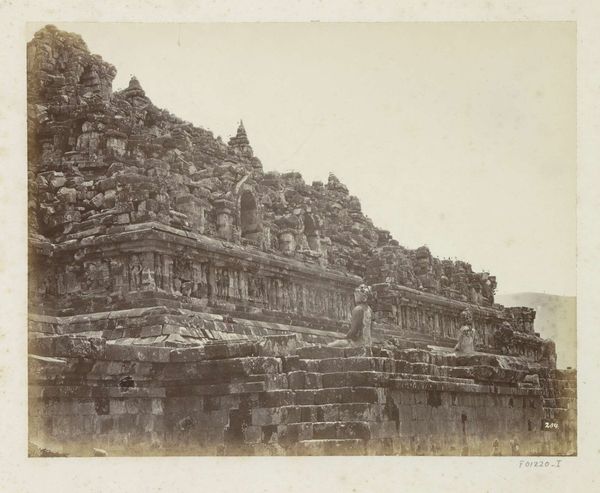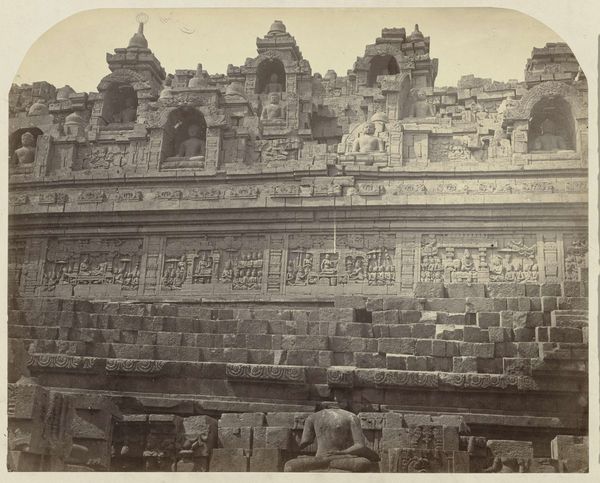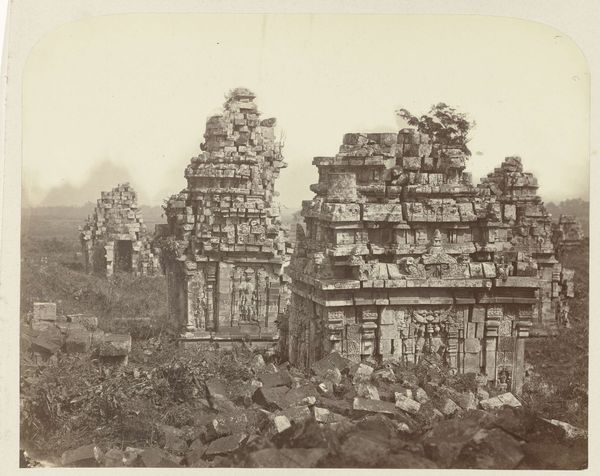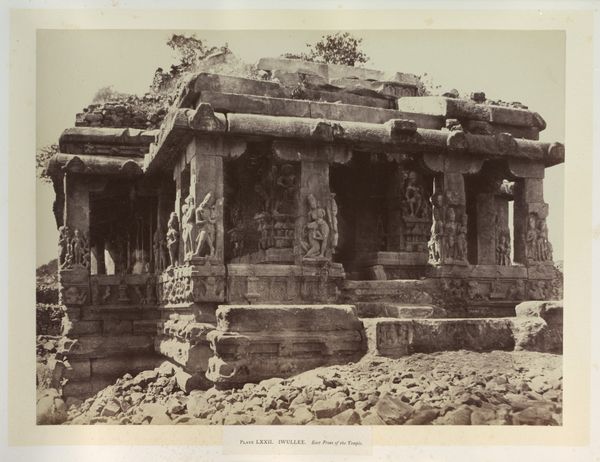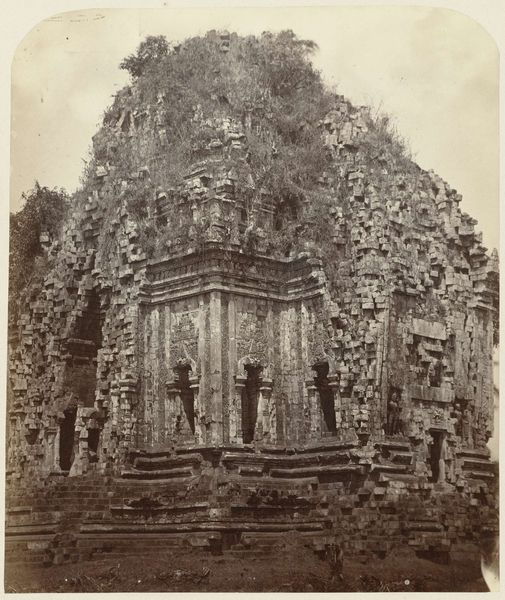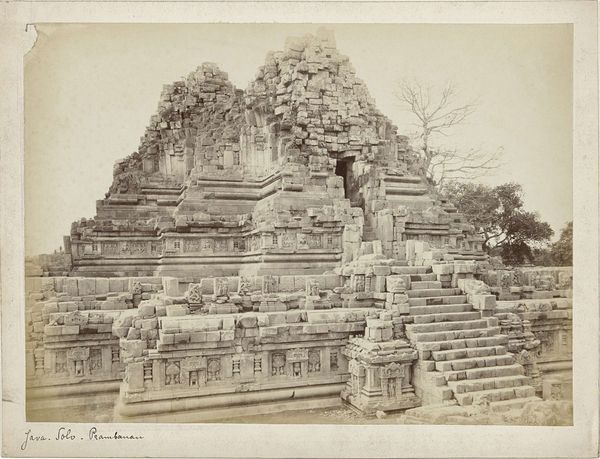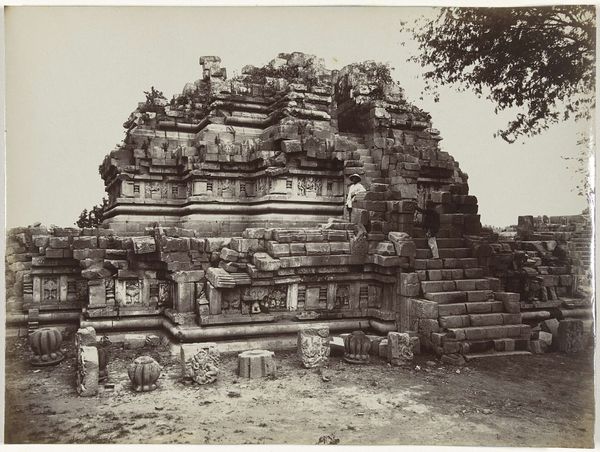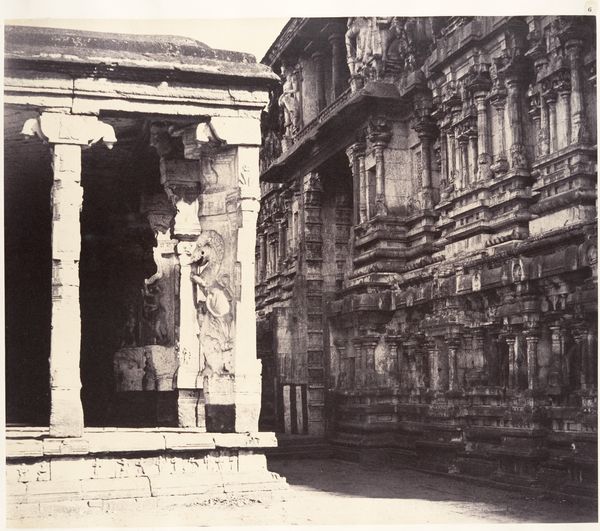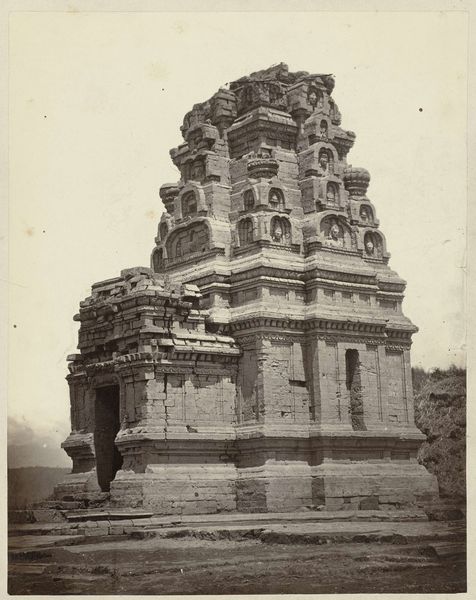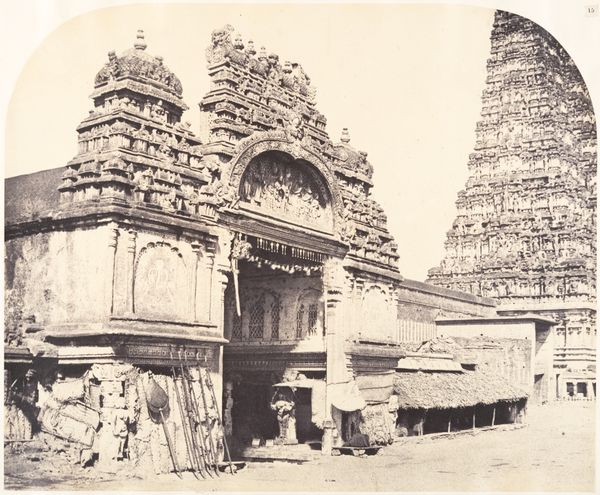
Candi Sari Monastery (Buddhist), side wall (probably northern), decorated with semi-divine beings, near Kalasan, Yogyakarta district, D.I. Yogyakarta province 9th century, Indonesia Possibly 1865 - 1867
0:00
0:00
photography, albumen-print, architecture
#
asian-art
#
landscape
#
photography
#
ancient-mediterranean
#
albumen-print
#
architecture
Dimensions: height 323 mm, width 275 mm
Copyright: Rijks Museum: Open Domain
Editor: So, this albumen print by Isidore Kinsbergen, possibly from the 1860s, depicts the side wall of the Candi Sari Monastery near Yogyakarta. The monumentality is incredible, yet it’s also overtaken by nature. What strikes you most about this photograph? Curator: I see a powerful tension between the enduring nature of religious architecture and the inevitable forces of change represented by the encroaching vegetation. Consider this photograph in the context of Dutch colonial power. How do you think Kinsbergen's choice of subject matter and photographic style might be seen in relation to colonial interests? Editor: That’s interesting, I hadn’t thought about it that way. Perhaps he was trying to show the decay of a culture that the colonists were "superior" to? Or perhaps this was also part of some early "Orientalist" craze among the public? Curator: Exactly! These photographs circulated in Europe, shaping perceptions of Southeast Asian culture and history. The romantic decay adds to a narrative easily consumed by a Western audience, solidifying a sense of cultural dominance. What about the figures on the walls, who do you think would have seen it at the time, in both Yogyakarta and Europe? Editor: In Yogyakarta, those seeing this photo in album form might've known, and therefore cared about the deities displayed along the monastery wall. Perhaps viewers in Europe would not grasp the spiritual or ritual significance of these figures. But with wide distribution across social classes, did photography in colonial contexts lead to more accurate or less accurate public understanding? Curator: A question that haunts art historians today. This single photograph is more than a picture, isn't it? It's an artifact embedded in a complex web of social, political, and artistic contexts, shaped by the power dynamics of its time. Editor: It is absolutely fascinating how a seemingly simple image holds so much historical and cultural weight. It's definitely made me think more deeply about photography and its role in shaping our understanding of history. Curator: Indeed. It is a reminder that art is never created in a vacuum, and that considering its historical context is crucial for a comprehensive interpretation.
Comments
No comments
Be the first to comment and join the conversation on the ultimate creative platform.
